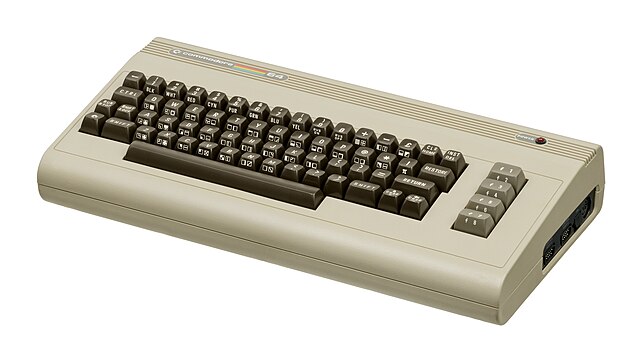The Commodore 64, also known as the C64, is an 8-bit home computer introduced in January 1982 by Commodore International. It has been listed in the Guinness World Records as the highest-selling single computer model of all time, with independent estimates placing the number sold between 12.5 and 17 million units. Volume production started in early 1982, marketing in August for US$595. Preceded by the VIC-20 and Commodore PET, the C64 took its name from its 64 kilobytes (65,536 bytes) of RAM. With support for multicolor sprites and a custom chip for waveform generation, the C64 could create superior visuals and audio compared to systems without such custom hardware.
Commodore 64
Game cartridges for Radar Rat Race and International Soccer
Commodore Educator 64
Commodore SX-64
Home computers were a class of microcomputers that entered the market in 1977 and became common during the 1980s. They were marketed to consumers as affordable and accessible computers that, for the first time, were intended for the use of a single, non-technical user. These computers were a distinct market segment that typically cost much less than business, scientific, or engineering-oriented computers of the time, such as those running CP/M or the IBM PC, and were generally less powerful in terms of memory and expandability. However, a home computer often had better graphics and sound than contemporary business computers. Their most common uses were word processing, playing video games, and programming.
Children playing Paperboy on an Amstrad CPC 464 in 1988
The often sprawling nature of a well-outfitted home computer is evident with this Tandy Color Computer 3.
The computers Byte (magazine) retrospectively called the "1977 Trinity" (L-R): Commodore PET 2001-8, Apple II, TRS-80 Model I.
Mary Allen Wilkes working on the LINC at home in 1965; thought to be the first home computer user








